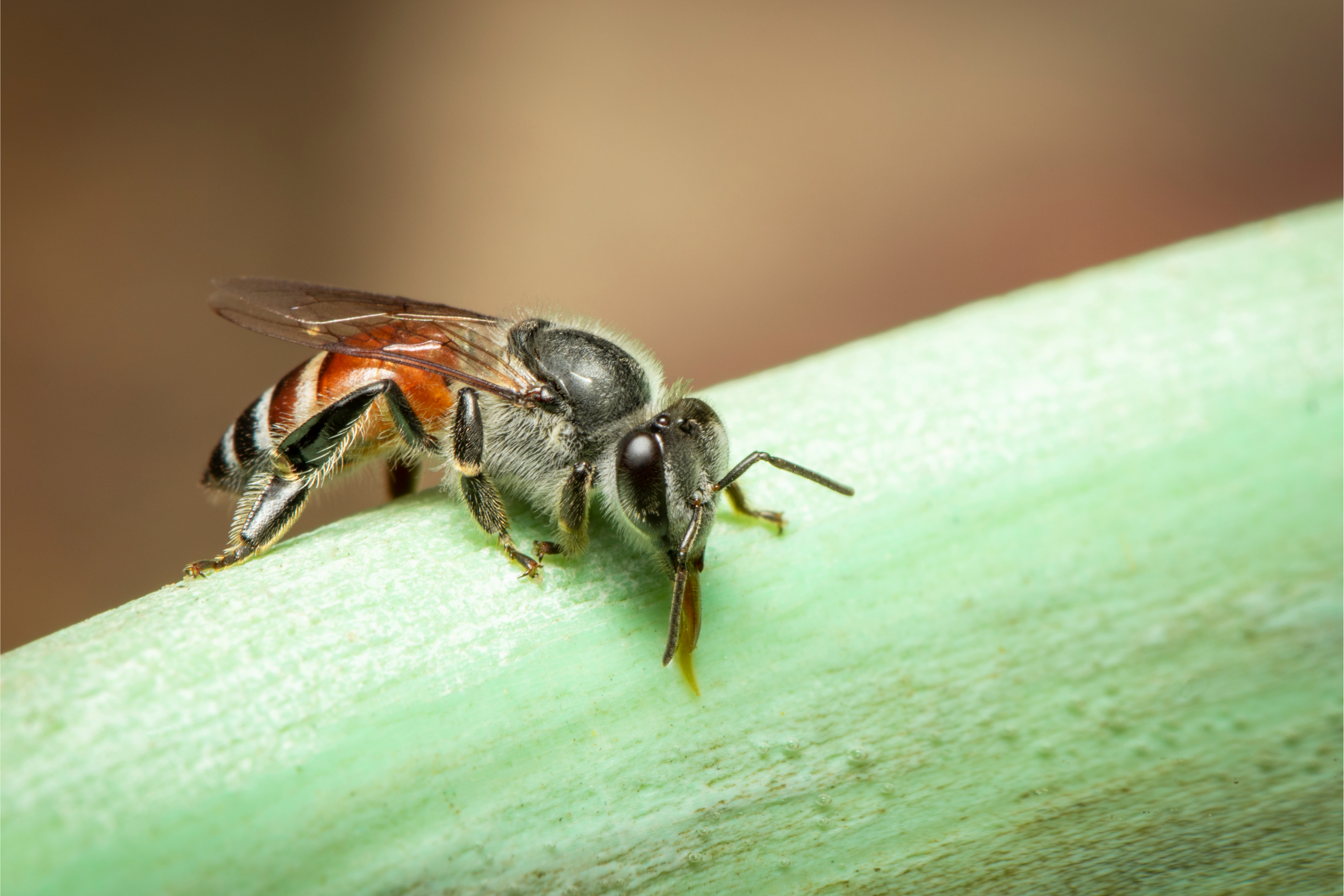Red dwarf honey bee
(Apis florea)

Description
The dwarf honey bee (or red dwarf honey bee), Apis florea, is one of two species of small, wild honey bees of southern and southeastern Asia. It has a much wider distribution than its sister species, Apis andreniformis. First identified in the late 18th century, Apis florea is unique for its morphology, foraging behavior and defensive mechanisms like making a piping noise. Apis florea have open nests and small colonies, which makes them more susceptible to predation than cavity nesters with large numbers of defensive workers. These honey bees are important pollinators and therefore commodified in countries like Cambodia. A. florea is called the dwarf honey bee due to its small size compared to other honeybees. A worker is typically 7–10 mm in body length and its overall coloration is red-brown. A colony builds a single, exposed comb usually on tree branches or shrubs. A. florea produce honey that is harvested and eaten in Thailand and Cambodia. They are excellent pollinators, which gives them an important ecological role in the places they inhabit. Drones carry a thumb-like bifurcation called the basitarsus, which is located two-thirds along the length of the tibia. The fimbriate lobe of A. florea has three protrusions and they sting using two stylet barbs. Apis florea and its sister species together comprise the subgenus Micrapis, and are the most primitive of the living species of Apis, reflected in their small colony size, and simple nest construction. The exposed single combs are built on branches of shrubs and small trees. The forager bees do not perform a gravity-oriented waggle dance on the vertical face of the comb to recruit nestmates as in the domesticated Apis mellifera and other species. Instead, they perform the dance on the horizontal upper surface where the comb wraps around the supporting branch. The dance is a straight run pointing directly to the source of pollen or nectar the forager has been visiting. The distinctiveness of the two species A. florea and A. andreniformis was established unequivocally in the 1990s. A. florea is redder and old workers always have a red first abdomen (younger workers are paler in colour, as is the case in giant honey bees); A. andreniformis is generally darker and the first abdomen segment is completely black in old bees.
Taxonomic tree:







